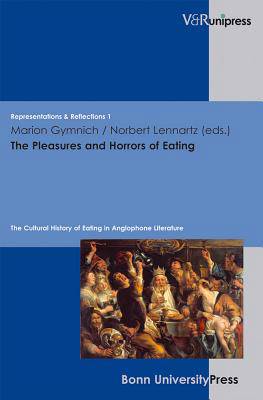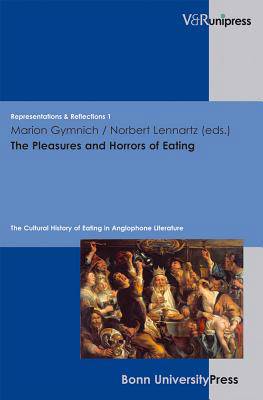
- Afhalen na 1 uur in een winkel met voorraad
- Gratis thuislevering in België vanaf € 30
- Ruim aanbod met 7 miljoen producten
- Afhalen na 1 uur in een winkel met voorraad
- Gratis thuislevering in België vanaf € 30
- Ruim aanbod met 7 miljoen producten
Zoeken
The Pleasures and Horrors of Eating
The Cultural History of Eating in Anglophone Literature
Norbert Lennartz
Hardcover | Engels
€ 165,95
+ 331 punten
Omschrijving
Browsing through books and TV channels, we find people pre-occupied with eating, cooking and competing with chefs. Eating and food in today's media have become a form of entertainment and art. A survey of literary history and culture shows to what extent eating used to be closely related to all areas of human life, to religion, eroticism and even to death. In this volume, early modern ideas of feasting, banqueting and culinary pleasures are juxtaposed with post-18th- and 19th-century concepts in which the intake of food is increasingly subjected to moral, theological and economic reservations. In a wide range of essays, various images, rhetorics and poetics of plenty are not only contrasted with the horrors of gluttony, they are also seen in the context of modern phenomena such as the anorexic body or the gourmandizing bete humaine. It is this vexing binary approach to eating and food that this volume traces within a wide chronological framework and which is at the core not only of literature, art and film, but also of a flourishing popular culture.
Specificaties
Betrokkenen
- Auteur(s):
- Uitgeverij:
Inhoud
- Aantal bladzijden:
- 464
- Taal:
- Engels
Eigenschappen
- Productcode (EAN):
- 9783899717754
- Verschijningsdatum:
- 25/10/2010
- Uitvoering:
- Hardcover
- Formaat:
- Genaaid
- Afmetingen:
- 157 mm x 244 mm
- Gewicht:
- 952 g

Alleen bij Standaard Boekhandel
+ 331 punten op je klantenkaart van Standaard Boekhandel
Beoordelingen
We publiceren alleen reviews die voldoen aan de voorwaarden voor reviews. Bekijk onze voorwaarden voor reviews.








